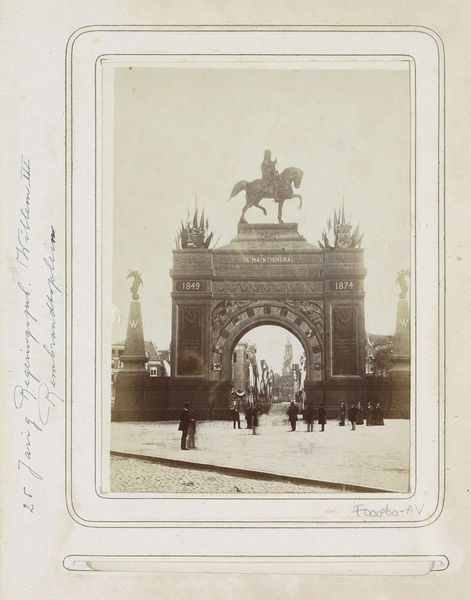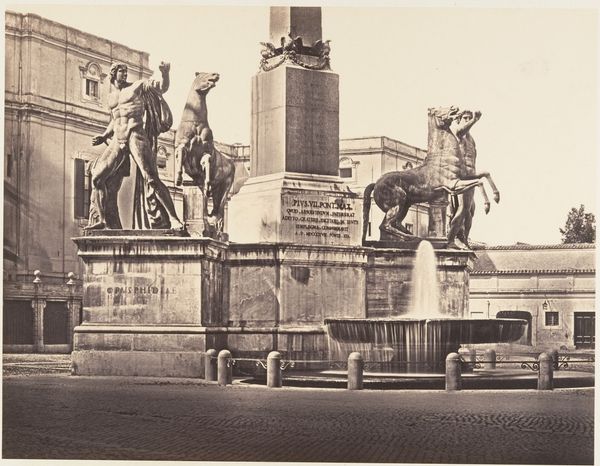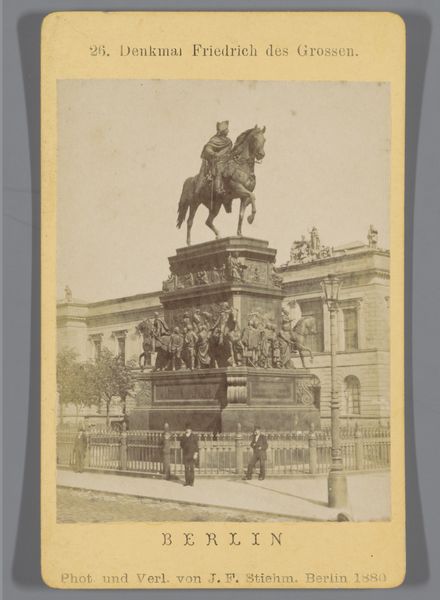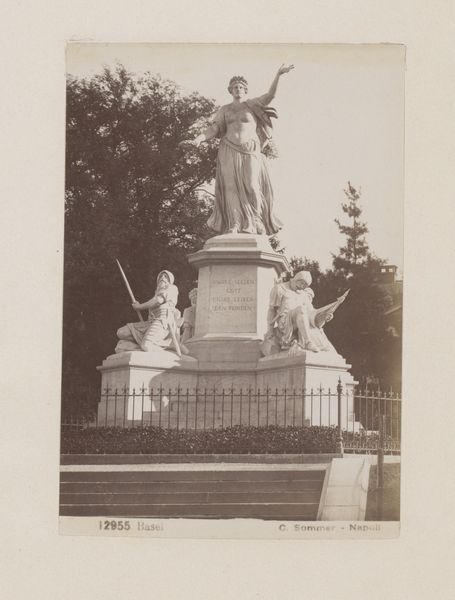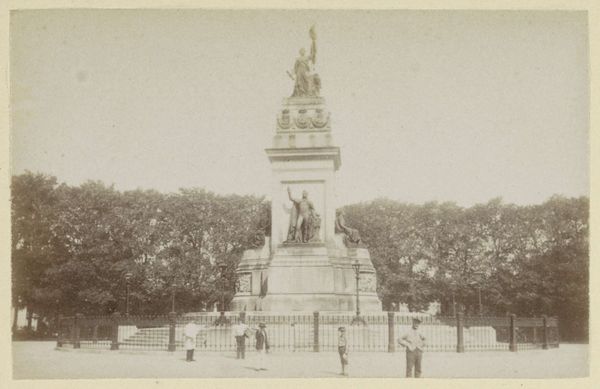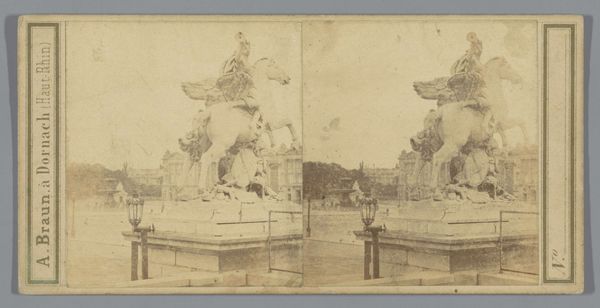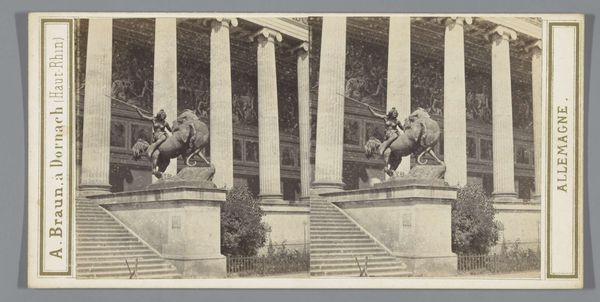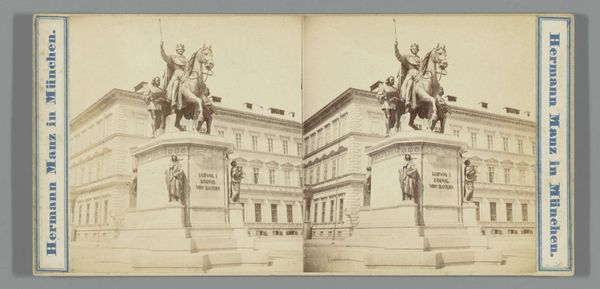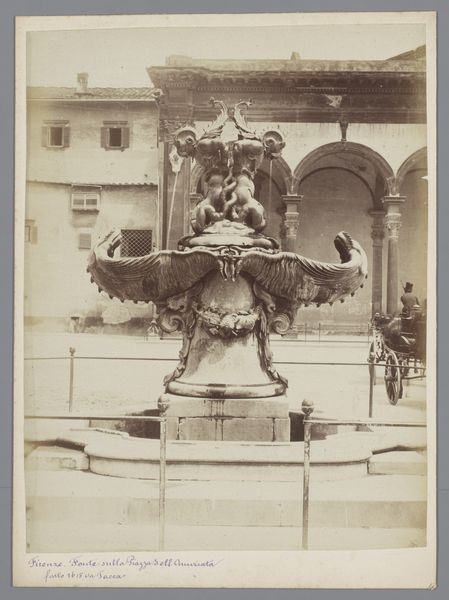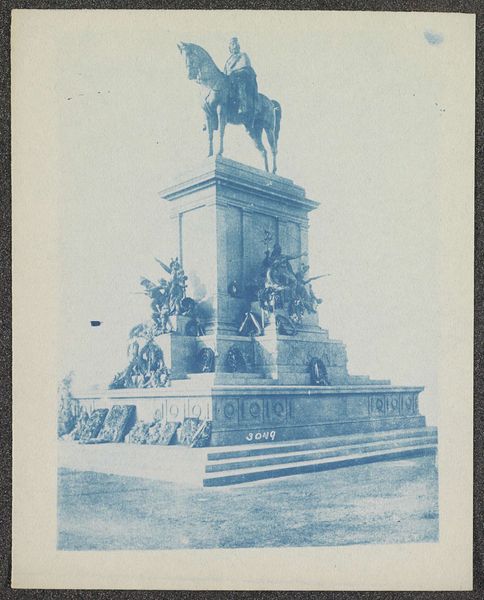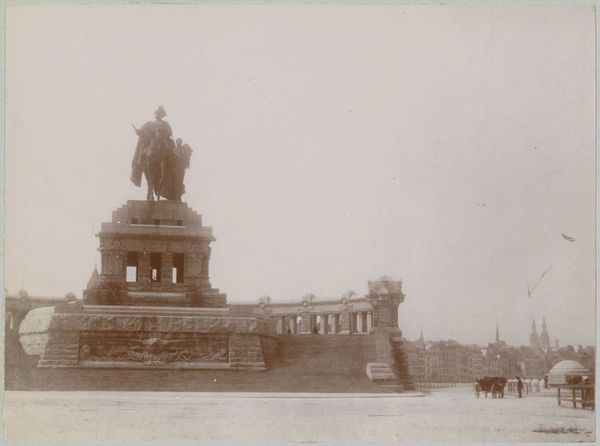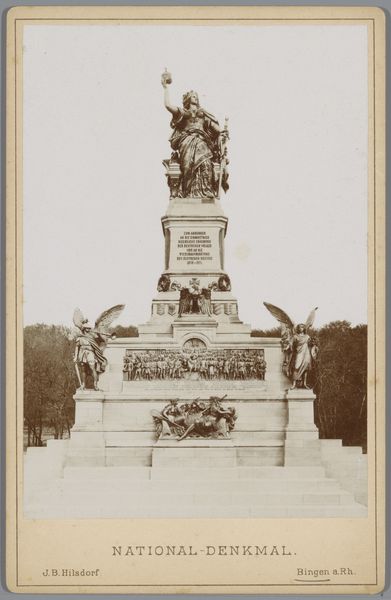
photography, gelatin-silver-print
#
portrait
#
landscape
#
archive photography
#
photography
#
historical photography
#
gelatin-silver-print
#
history-painting
#
modernism
Dimensions: height 5.5 cm, width 8 cm
Copyright: Rijks Museum: Open Domain
Curator: Here we have an interesting archival photograph. It's titled "Man in uniform bij een monument," which translates to "Man in uniform by a monument." It’s attributed to an anonymous photographer and dates to somewhere between 1940 and 1943. The medium is a gelatin-silver print. Editor: Stark. It's a bleak and imposing composition. The uniform and monument form a disturbing symmetry. Curator: Absolutely. The period it was taken in is crucial. This was during the Nazi occupation of the Netherlands. The image becomes unsettling when viewed through the lens of wartime power structures. Who was this man? What was the purpose of this image? Editor: The monument itself seems to symbolize civic virtue or national pride. But it's almost overwhelmed by the photograph’s harsh tones, the monument looms and dwarfs the figure. The statues flanking the monument also seem to be in contrapposto. It creates a rigid, controlled feel to the composition. Curator: That’s an astute observation about the symbolism. One has to consider the political undertones of staging this photograph during that time. The act of photographing this man next to the monument served a propaganda agenda to solidify power. It is an intentional visual language. Editor: And even from a pure aesthetic point of view, that strong verticality really emphasizes the dominating stature intended for the monument itself. You're right, there is a real propagandistic feel. Curator: Precisely. These images served to reinforce ideology and project an image of control. Editor: The way the image quality makes it appear both aged, and newly exposed, creates a visual sense of timeless dread. Curator: It’s a chilling testament to the power of imagery. And of art's role as a historical tool, intended or otherwise. Editor: It reminds us how photographic construction and intention alters how we perceive an image as historical record.
Comments
No comments
Be the first to comment and join the conversation on the ultimate creative platform.

